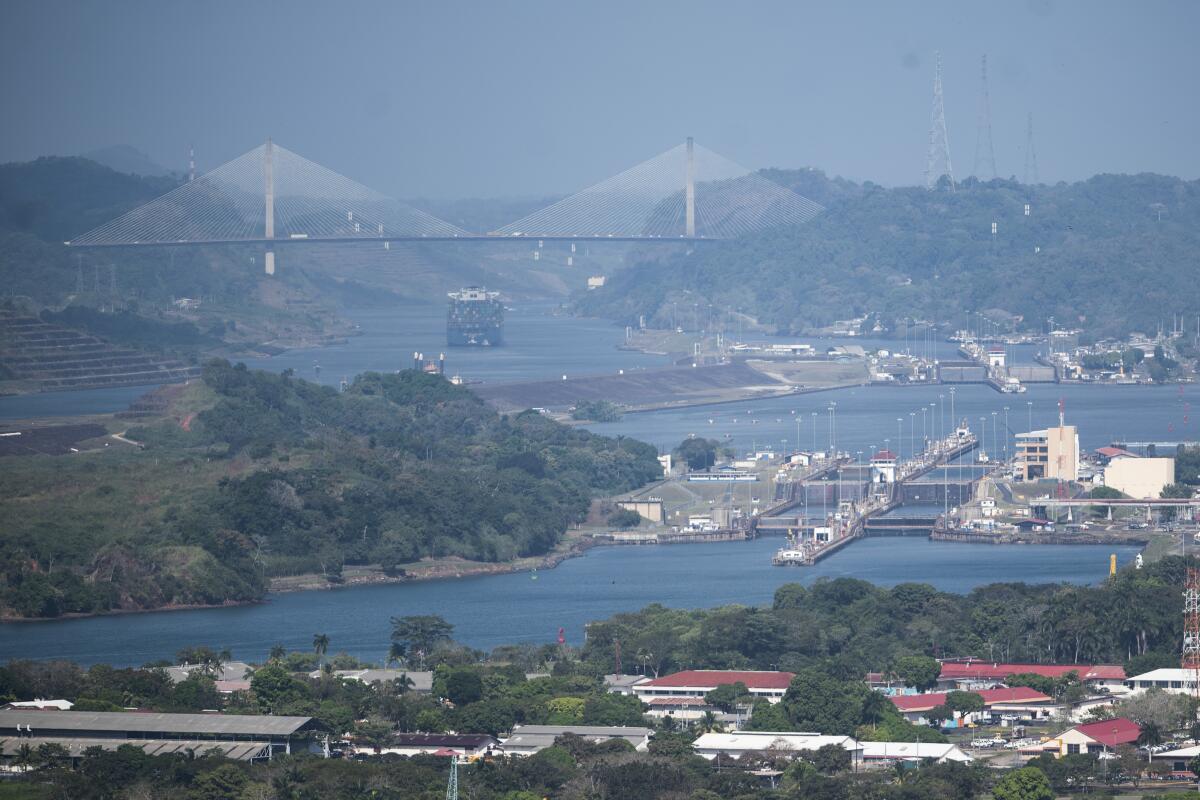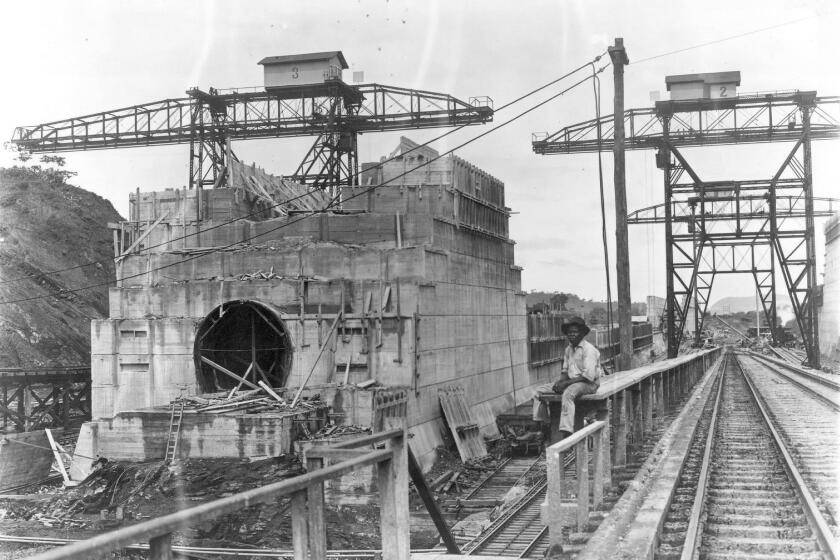Drop in Panama Canal traffic because of severe drought could cost up to $700 million

- Share via
PANAMA CITY — A severe drought that began last year has forced authorities to slash ship crossings by 36% in the Panama Canal, one of the world’s most important trade routes.
The new cuts announced Wednesday by authorities in Panama are set to deal an even greater economic blow than previously expected.
Canal administrators now estimate that dipping water levels could cost them $500 million to $700 million in 2024, compared with previous estimates of $200 million.
One of the most severe droughts ever to hit the Central American nation has stirred chaos in the 50-mile maritime route, causing a traffic jam of boats, casting doubts on the canal’s reliability for international shipping and raising concerns about its effect on global trade.
On Wednesday, Panama Canal Administrator Ricaurte Vásquez said authorities would cut daily ship crossings to 24, after already gradually slashing crossings last year from 38 a day in normal times.
“It’s vital that the country sends a message that we’re going to take this on and find a solution to this water problem,” Vásquez said.
The Panama Canal opened Aug. 15, 1914. Here is a look at its 100 years of history.
Vásquez added that, in the first quarter of the fiscal year, the passageway saw 20% less cargo and 791 fewer ships than in the same period the previous year.
It was a “significant reduction” for the country, Vásquez said. But he said more efficient water management and a jump in rainfall in November have ensured that water levels will remain high enough for 24 ships to pass daily until the end of April, the start of the next rainy season.
Canal authorities attributed the drought to the El Niño weather phenomenon and climate change, and warned that it was urgent for Panama to seek new water sources for the canal’s operations and human consumption. The same lakes that fill the canal provide water for more than 50% of the country of more than 4 million people.
“The water problem is a national problem, not just of the canal,” Vásquez said. “We have to address this issue across the entire country.”
More to Read
Sign up for Essential California
The most important California stories and recommendations in your inbox every morning.
You may occasionally receive promotional content from the Los Angeles Times.














